General
Meet Mak Professor with 10 Acres of Livestock Fodder for the December–February Dry Season
Published
7 years agoon
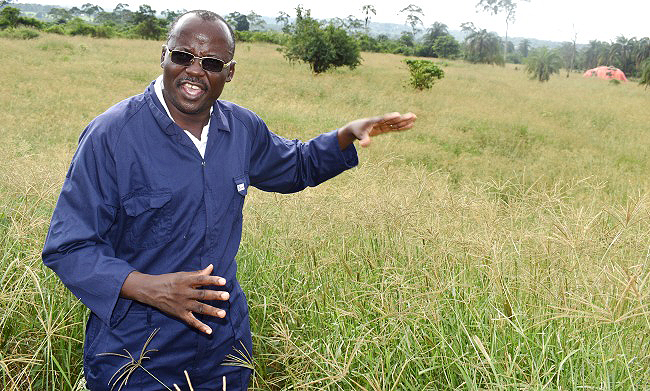
Can Agriculture Professionals roll up their sleeves and blunt the biting effect of drought, occasioned by climate change, on livestock production through research, innovations and entrepreneurship?
The situation
Seasonality of forage is one of the major challenges in meeting nutritional requirements of dairy, beef and dual-purpose cattle, goats, sheep, horses and donkeys in Eastern Africa. Feed scarcity for the livestock is occasioned by frequent and erratic droughts some of which are prolonged. To address this challenge, fodder production and conservation technologies such as hay, silage and haylage production technologies have been introduced and promoted as a potential strategy to addressing feed scarcity among farmers. These technologies are aimed at increasing livestock feed availability during the dry periods in addition to diversifying income through sale of hay bales and grass seed among communities. However, while previous studies have shown an increasing trend of acceptance and adoption of forage and its conservation as hay among farmers in Kenya, Tanzania, Ethiopia, Somalia and Djibouti, farmers in Uganda have not fully embraced the fodder conservation technologies. Failure by farmers to adopt scientific innovations to solve the real challenges of feed scarcity that face livestock farmers during prolonged drought makes us wonder why?
Why the Need for agricultural professors to roll up their sleeves?
Despite the known benefits of fodder conservation, which has been taught at Makerere University and other institutions of higher learning for over 50 years, there is scarcity of information on fodder value chain that is crucial in informing development and up scaling the technology of hay production as a business among the communities.
Prof. Kabi, an animal scientist from the College of Agricultural and Environmental Sciences (CAES), Makerere University has innovated an alternative way of taking the university lecture room to the communities. Prof. Fred Kabi has rolled up his sleeves and has dedicated his livestock science knowledge, skills and over 10 acres of land situated in Kapeka to production of Chloris gayana hay intercropped with Centrosema pubscens legume. This could also be a driver for aspiring farmers to open up and learn a new approach to growing pastures and its conservation as hay for livestock feed as a way of diversifying enterprises at the farm. He is optimistic that within four years , he should open up about 40 acres populated with Chloris gayana and Cencherus ciliaris grasses together with Desmodium and Stylosanthes guianensis legumes all of which are drought tolerant pastures. In his words, this action is intended to blunt the biting effect of drought among dairy and beef farmers most of whom lose revenue during prolonged droughts when the milk prices are very high yet milk production drops due to insufficient fodder availability.

Ecological green gold for job creation and sustainable employment
High demand for milk and meat consumption in urban and peri-urban areas irrespective of seasons will be the major market driver for feeding hay to livestock as an alternative to the green chop of elephant grass during the dry seasons in Uganda. While elephant grass can be a promising source of fodder due to its prolific growth during the rainy season, its growth is seriously curtailed during the dry season leading to fodder deficiency. Moreover, it is during the dry season when the prices of milk go very high. Since the crude protein content of Chloris Gayana grass is comparable to that of elephant grass (about 9 to 12 %), Prof. Kabi thinks production of Chloris Gayana grass and the drought-tolerant legume pastures conserved as hay and their seeds needs to be exploited as an enterprise to meet the growing needs of farmers. Uptake of hay and seed production by entrepreneurs with the necessary factors of production, knowledge and skills is one way of turning the challenge of erratic and prolonged droughts into an opportunity for job creation and employment especially for the youth and women.
Together with his graduate students, Prof. Kabi thinks innovation along the dairy and meat value chains can lead to cottage industries where pasture hay can be pulverized into small pieces and mixed with other ingredients such as maize, cotton seed cake and minerals as a total mixed ration. When bagged rather than baling, Prof. Kabi considers this as a practical application of innovative feed solution for not only peri-urban farmers but as a potential export to the region. This is where the University don is advocating for a deliberate effort and government policy to make sure that just like Tourism is advertised, a deliberate effort to create jobs for the youth can be made by advertising Uganda as a possible source of bagged hay as green gold. Production of hay for local, regional markets is one of those efforts that can meaningfully engage the youth in the dairy and beef value chains. For effective exploitation of pasture hay as green gold, there is need for deliberate effort to organize not only production but the market. It is the belief of the professor of animal nutrition that the future of the youth involvement in the dairy or beef value chain only belongs to the organized. But organization of the youth in any production enterprise along any given value chain will only be successful if such production is driven by the market incentives Kabi says.
Turning the challenge into an opportunity
The CAES Communication office followed up Professor Kabi to Kapeka to establish the motivation behind his involvement in pasture grass establishment for livestock among the communities. The Don says that after careful analysis of the beef and dairy value chains from the perspective of an animal nutritionist, he has established that there were so many people who want to do dairy or beef farming business but lack pasture feed resource for their animals. Moreover, the scarcity of pastures is more prominent among peri-urban farmers with a good market of their milk and beef but with limited land to produce fodder for livestock. So, he took on that challenge as an opportunity.
“Secondly, during prolonged dry seasons which are due to the challenge of climate variability, livestock farmers cannot sustain the same number of animals at the farm kept in the wet season due to limited access to feeds. Since the consumers’ demand for milk and meat has gone up yet the farmers who produce milk and meat for one reason or the other cannot adopt technology for producing feeds for the milking animals during the dry season, someone has to close the gap but at a cost.

Scientists who preach the science of fodder conservation and nutrition in lecture room can now innovate and participate in value addition to pastures to bridge the gap of limited milk and meat supply during the dry season. Producing hay in Kapeka is like constructing a lecture room among the communities. This was one of my incentives to go into pasture production for hay. This will not only demystify the science of fodder production and conservation but will also create jobs among the youth, help in diversification of income and help build market for the hay and seed”, Prof. Kabi explained.
The don cites the experience of farmers in Uganda who planted maize and had to sell it at a price of UGX200 a kilogram. But a kilogram of hay goes for UGX500-700 or a bale of 10 to 15 kg from UGX5,000-7,000 while a kilogram of Chloris Gayana seeds fetches up to UGX3,000-4,000 while that of green leaf desmodium can fetch up to UGX150,000. This puts a farmer’s land and knowledge to good use and contributes to the dairy and beef value chain.
Clad in his blue overalls, the Professor cuts the mature Chloris Gayana, pauses and says, “Here, we are with the question – Can agricultural sciences, innovations and entrepreneurship blended with policies be able to solve the challenge of youth unemployment?”
The answer according to the Professor can be yes or no.
Prof. Kabi observed that farming in Uganda has been mainly on a small-scale subsistence without organized markets and this can never appeal to the youth as a cool engagement. In the affirmative, however, once there is organized market, this will be the driver for accepting scientific innovations and a way of igniting entrepreneurial skills among the youth for as long as they can be able to earn from their engagement in agriculture.
However, Kabi explains that understanding the whole dairy or beef value chains at the local, regional or at international level is crucial for positioning agriculture as a source of employment to the youth. For instance, about 50 years ago, Africa commanded about 6% of the global trade volume. This has been declining over the years and right now, Africa transacts about 2.4% of the global trade volume. To be specific, the current trend now indicates that the volume of trade of Africa excluding South Africa, Egypt and Morocco i.e. Sub Saharan Africa is 1.7% of the entire global trade. According to the Professor, this creates a worrying challenge of unemployment because there is an imbalance of trade.

“So how can agricultural sciences, innovations and entrepreneurship be able to take us back into commercial trade and export that was enjoyed by Africa in the 1950s? This is where export drive livestock production is so crucial to the nation Uganda. Uganda needs to understand the dairy, and meat value chains so that we can be able to position ourselves to penetrate the international market. This can be through non-conventional agricultural produce such as hay and pasture seed production”, explained the Professor as he pointed at the garden.
Borrowing from the Ethiopian experience, Professor Kabi said, at the last quarter of the year 2018 there was a deliberate effort in Addis Ababa for the country to access regional markets in terms of hay. Demand for hay market could go as far as the Middle East as a result of climate change, a development that entrepreneurs were taking advantage of.
In the middle East, Kabi cited that the market is interested in live meat goats of a given conformation. Finishing such goats on processed hay seems like a plausible way of meeting standards for such external markets. Relatedly, in an international meeting organized by the International Livestock Research Institute (ILRI) under the auspices Food and Agricultural Organization (FAO) of the United Nations, the representatives of Intergovernmental Authority for Development (IGAD) opined that some countries can indirectly participate in the dairy and meat value chain by producing fodder that is required for the industry.
Prof. Kabi asserts that Uganda too, can have a cottage industry to process hay and make it ready for farmers who keep dairy and beef animals, spearheaded by professors who are the proponents of feed conservation but driven by the youth. The whole of Kampala for example has small holder farmers practicing zero grazing. The 10 acres of land under Chloris Gayana pasture production for hay is equivalent to 4 hectares. Each hectare can yield 25 to 35 tons of hay dry matter per year, which is estimated to annually feed 5-6 mature cows.
Kabi says, if we have several of such hay farmers organized into a cooperative, we can feed the dairy industry at a local level but with excess available for export to countries like Kenya which are yearning for feeding materials. But is there a deliberate effort by Uganda to organize both production and market of non-conventional produce so that people do not only look at growing priority crops such as maize but diversify to fodder as an alternative source of foreign exchange?” He asked.

Prof. Kabi notes that Uganda can be able to export hay to Kenya and middle east but this requires a deliberate effort to get both production and market organized. This he said is what happened when colonialists were able to organize markets for coffee, minerals and cotton.
“This explains why paradoxically the African share of the global trade almost a sixth of what it was 50 year back. The decline in the volume share of trade from Africa as a proportion of the global trade is certainly a reflection of the real poverty on the continent and together with unemployment for the youth”, He said.
The professor thinks that the only way to solve the challenge of imbalance of trade is to think beyond conventional trade especially of agricultural produce and to diversify it with alternative ecological exportable produce including processed hay for income and employment creation for the youth. Value addition through cottage industries where science, innovation and entrepreneurship is blended with deliberate policy of production driven by export trade is needed. Uganda can surely be marketed and known to be a hay basket for the whole region.
Prof. Kabi further notes that if a deliberate effort is not taken to create the markets for unconventional products, then the country can never have its agriculture produce access regional and international markets. However, he emphasized the need to export produce in a sustainable way, where sustainability means making use of low input natural resources like the Chloris Gayana intercropped with Centrosema as a legume that is naturally occuring but with value addition to be competitive in the market. This can be the basis for inspiring the youth to get involved in agriculture.
Nutritional value of Chloris Gayana
The high yield of Chloris Gayana of 25 to 35 tons per ha per year coupled with its high crude protein content of between 9-12% is comparable to that of 10 to 50 tons of elephant grass with crude protein content of 10 to 13 %. The most important point is that Chloris Gayana can withstand dry conditions making it the right crop in the face of climate change. It simply rejuvenates after cutting unlike elephant grass which is only prolific in growth during the rainy season. Besides, Chloris Gayana can be intercropped with legumes such as centrosema , desmodium (both green and silver leaf), siratro (Bishops purple), stylosanthes and glycine.

Farm management practices
The seedbed for Chloris has to be a fine tilled just as is the case for millet, because the seeds of the pasture are quite small. After seedbed preparation, you have to ensure that you plant at the onset of the rains in the same planting season of maize. Furrows are dug either manually or mechanically. Chloris Gayana is planted in rows like maize at spacing of 2ft from one row to another to allow ease of weeding because while young it can easily succumb to weeds. The seeds are mixed with sand, black soil or preferably composted cattle manure and broadcast within the dug furrows. A thin layer of soil is used to cover the seeds so that they do not fail to emerge and to protect them from being systematically eaten up by birds. After some 7 to 14 days, the seed will germinate. However, if it is dry, it may fail to germinate. If the germination percentage of the seed is 50% and above, the seed bed should be entirely covered by three months. If the germination percentage is below 50%, allow the seeds to shutter in the garden. With proper weeding and rains, the next ratoon will be ready for seed harvesting after 30 to 50 days. After harvesting you weed and manure the grass to that it can maintain the growth vigor.
Unlike the Chloris gayana seed which has to be harvested as soon as it is ready to avoid shuttering and its destruction especially by the birds, hay should preferably be harvested at dough stage when half way the garden is flowered. However, the harvesting should coincide with the onset of the dry season to avoid moulding. The cut grass should be raked to enable thorough drying to only 15 % moisture content like maize grain. The dried hay should then be baled using either tractor driven hay balers or hand-operated hay baler boxes. Baled hay should then be kept in a cool and dry shelter that is water proof preferably raised on pallets or in a crib like maize. Failure to adhere to these conditions will lead to moulding.
Challenges of farming Chloris Gayana
Growing the fodder on ten acres requires machinery including a tractor and accessories such as a reciprocating mower, a rake, a tractor-operated baler and a drying shed for green curing so that customers end up with green rather than golden hay color before its storage. This is crucial in conserving the beta carotene or the precursor for vitamin A necessary for the yellowish creamy color of milk.
The other major challenge challenge is labor. Youth do not think hay is a lucrative business to be engaged in. However, professor Kabi thinks if organized and turned into an enterprise, the youth will realize hay production is green gold that is worth getting engaged in especially if the market is streamlined. This is the reason why the professors should roll up their sleeves, get their hands dirty as role models for the youth and attempt to turn the challenge of prolonged drought occasioned to livestock by climate change into an opportunity.
Report compiled by;
Jane Anyango,
Principal Communication Officer, CAES
You may like
General
Simplicity, Service & Scholarship: Hallmarks of Professor Livingstone Luboobi’s Legacy
Published
9 hours agoon
July 18, 2025By
Eve Nakyanzi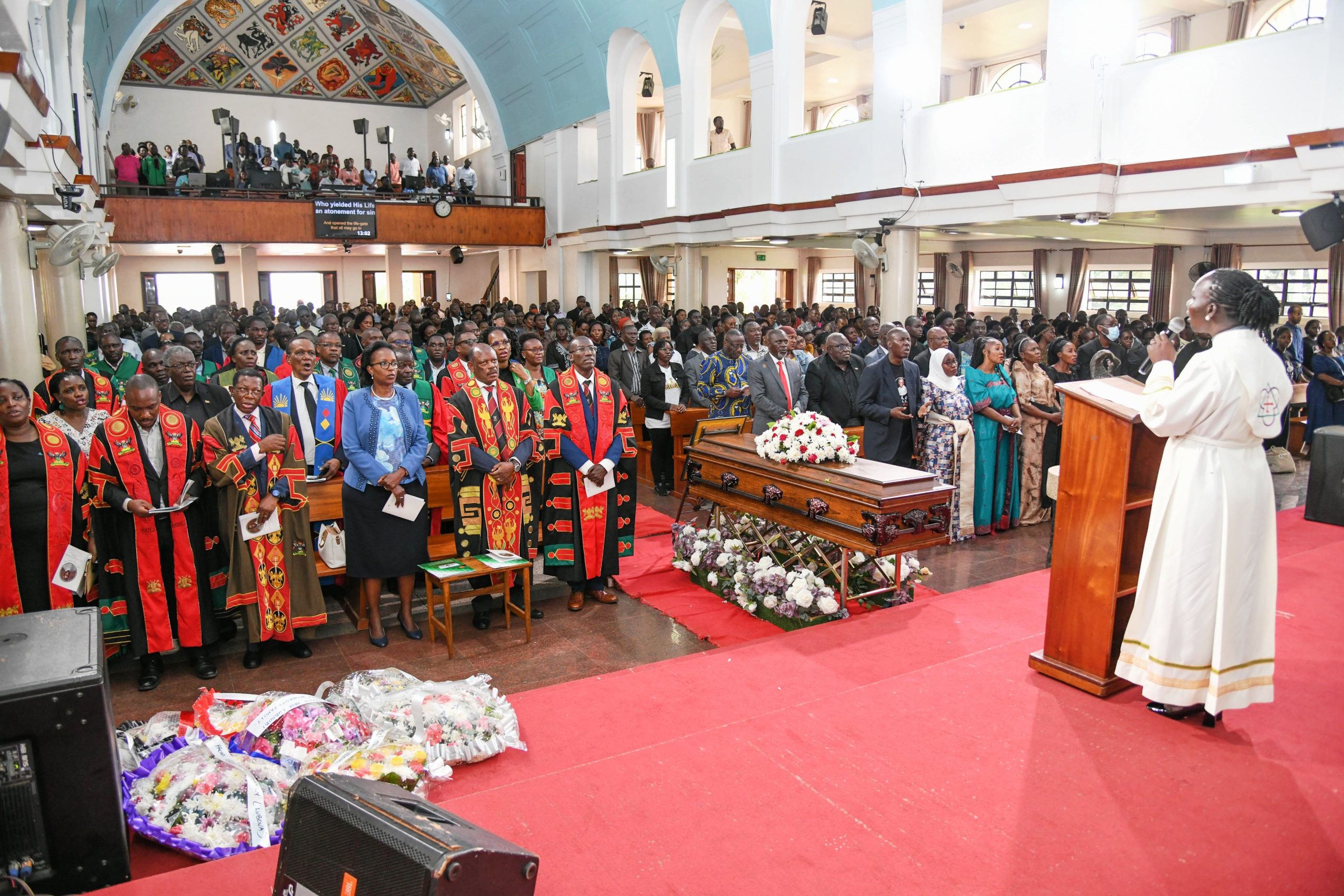
On Wednesday 16th July 2025, Makerere University lost one of its most cherished sons, Professor Livingstone Sserwadda Luboobi. Described as a mathematician, academic leader, and humble servant, Professor Luboobi devoted more than five decades to the university, rising through the ranks to become Vice Chancellor, and leaving a legacy defined by simplicity, service, and scholarship.
Born to Lameka Serwadda and Sanyu Serwadda on 25th December 1944 in Mitondo, Kalisizo, Kyotera District, Professor Luboobi’s academic career begun as a third-year student at Makerere and continued with unwavering loyalty until his passing. His life’s work reflected not only a commitment to mathematics but also nurturing generations of scholars and leaders across Uganda and beyond.
A funeral service was held in his honour at St. Francis Chapel, Makerere University on 18th July 2025. It was a moment of solemn remembrance and heartfelt tribute. Rev. Canon Dr. John Senyonyi delivered the sermon titled “Only God Knows,” reminding mourners of the mystery and grace of life’s journey. Rev. Canon Geoffrey Byarugaba represented the Kampala Diocese at the service, while former St. Francis Chaplain, Rev. Dr. Canon Johnson Ebong thanked Professor Luboobi for spearheading the Chapel’s expansion. Friends, colleagues, and family members filled the chapel, joined in mourning but also in gratitude for a life that had deeply touched theirs.
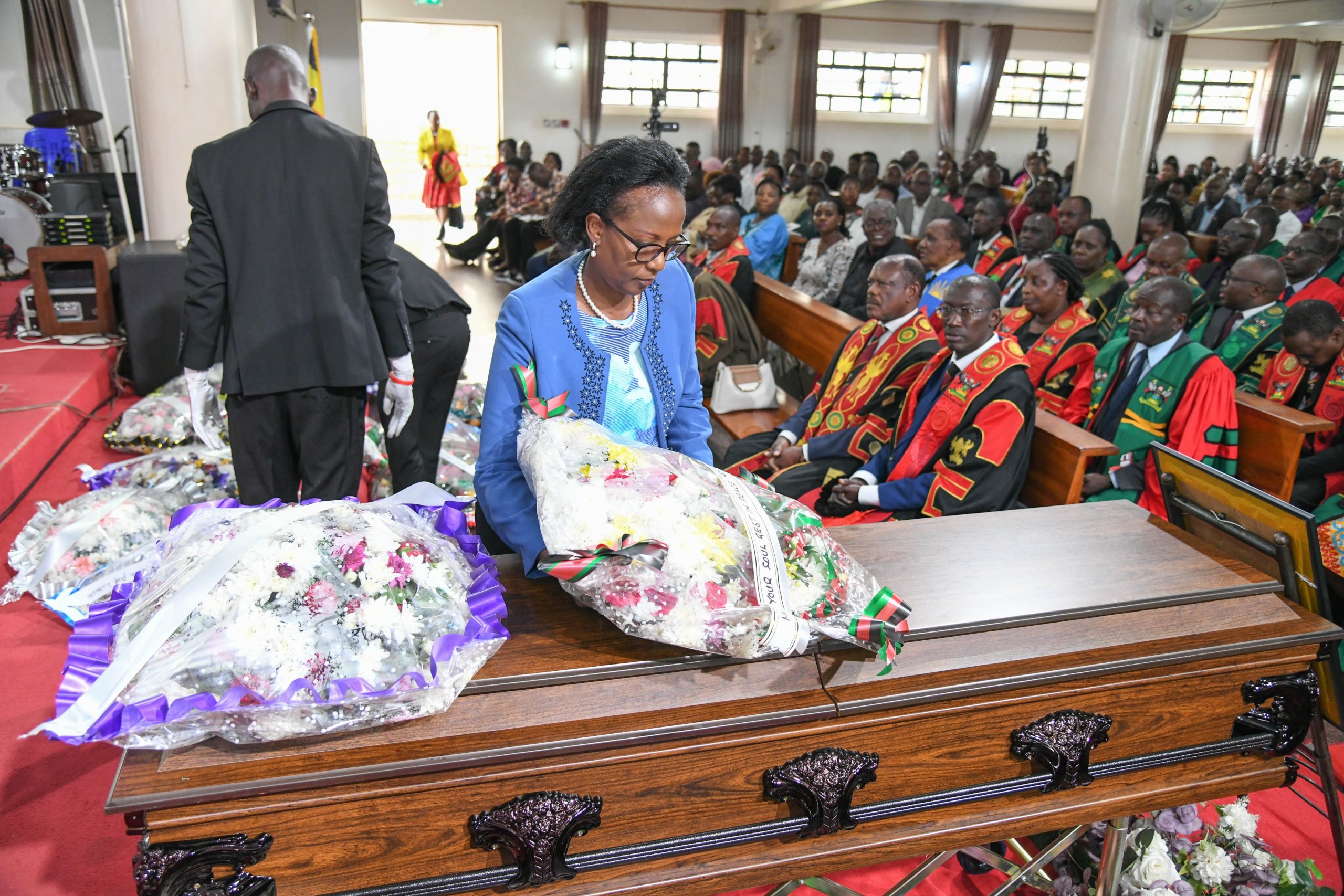
Mrs. Lorna Magara, Chairperson of the University Council, spoke movingly about Professor Luboobi’s faithfulness, likening his life to the biblical call in Mark 10:43, “Whoever wants to become great among you must be your servant.”
In his condolence message, the Vice Chancellor, Professor Barnabas Nawangwe, hailed Professor Luboobi as a visionary leader whose legacy is deeply woven into Makerere’s identity as a research-led institution. He credited Professor Luboobi with laying the groundwork for a culture of inquiry—championing graduate programmes, encouraging doctoral training, and fostering international collaborations that strengthened the university’s research profile. “He believed in building systems, not just structures,” noting that many of Makerere’s current research policies stem from his leadership. Even in retirement, Professor Luboobi remained a source of wisdom and guidance, quietly shaping the future of the university he so deeply loved.
Speaker after speaker painted a portrait of a man who led not by pomp, but by quiet strength and deep conviction. The Principal, Professor Winston Tumps Ireeta, speaking on behalf of the College of Natural Sciences (CoNAS), described Professor Luboobi as a foundational figure whose influence is deeply etched in the structures and spirit of the college. He spoke with emotion about Luboobi’s unwavering commitment to academic integrity and his belief in the power of mentorship.
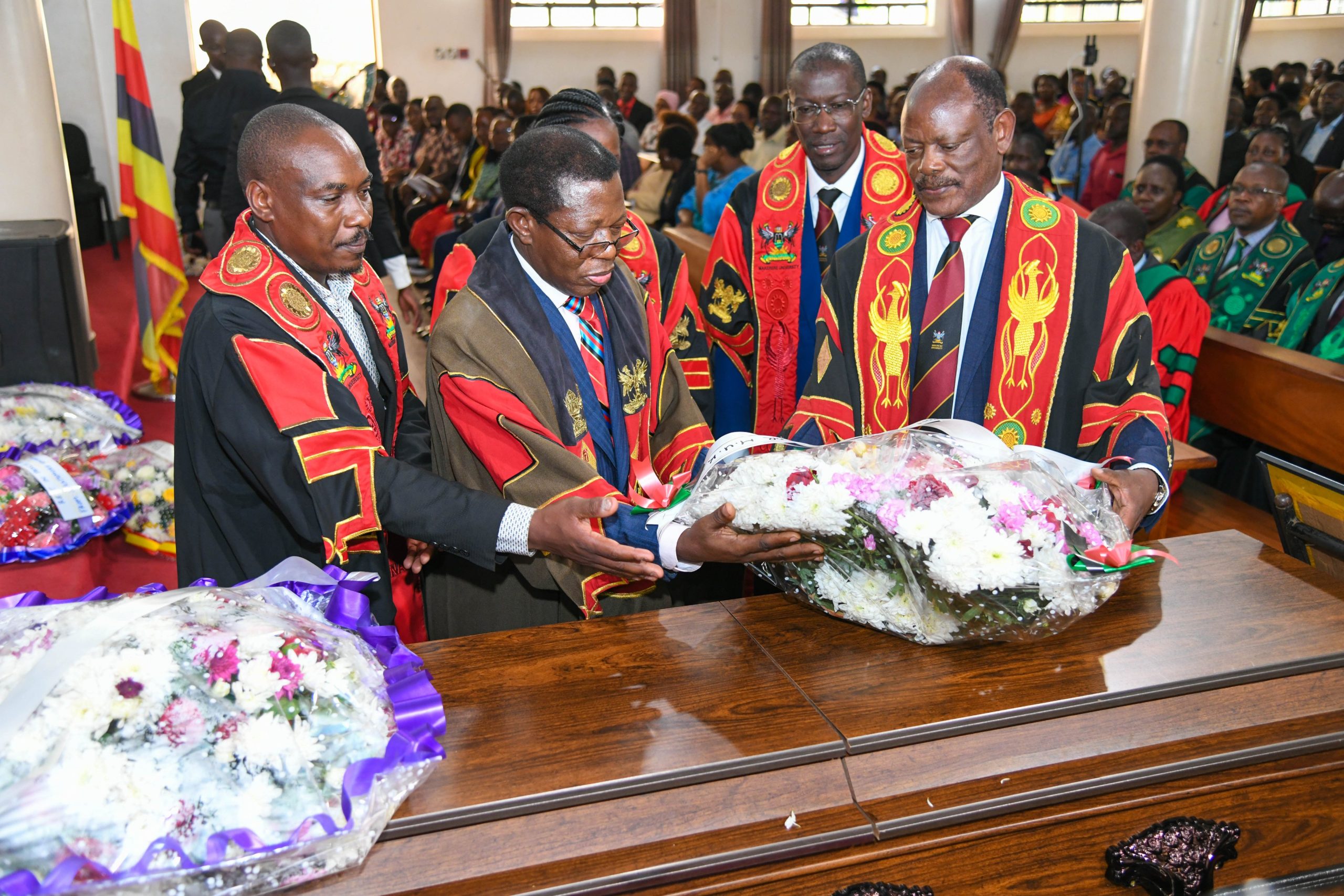
“He was not just a mathematician,” Professor Ireeta said, “he was a visionary who understood the soul of the university. Even in retirement, he remained an advisor, a guide, and a quiet force of wisdom.” He concluded by saying that the college would continue to draw from his example as it navigates the future of science and innovation in Uganda.
Professor Luboobi’s illustrious career at Makerere University included serving as Head, Department of Mathematics from 1990 to 1991. The current Head of Department, Dr. Ismail Mirumbe remembered him as a pillar in the teaching and development of mathematics in Uganda
Professor John Mango, who served as Head, Department of Mathematics during Professor Luboobi’s term as Vice Chancellor from 2004 to 2009 described him as a towering figure of integrity and principle, someone who not only upheld the highest standards of academic conduct but insisted that others around him do the same. “He was a pillar in the department,” Prof. Mango remarked, “and his moral compass was unwavering.”
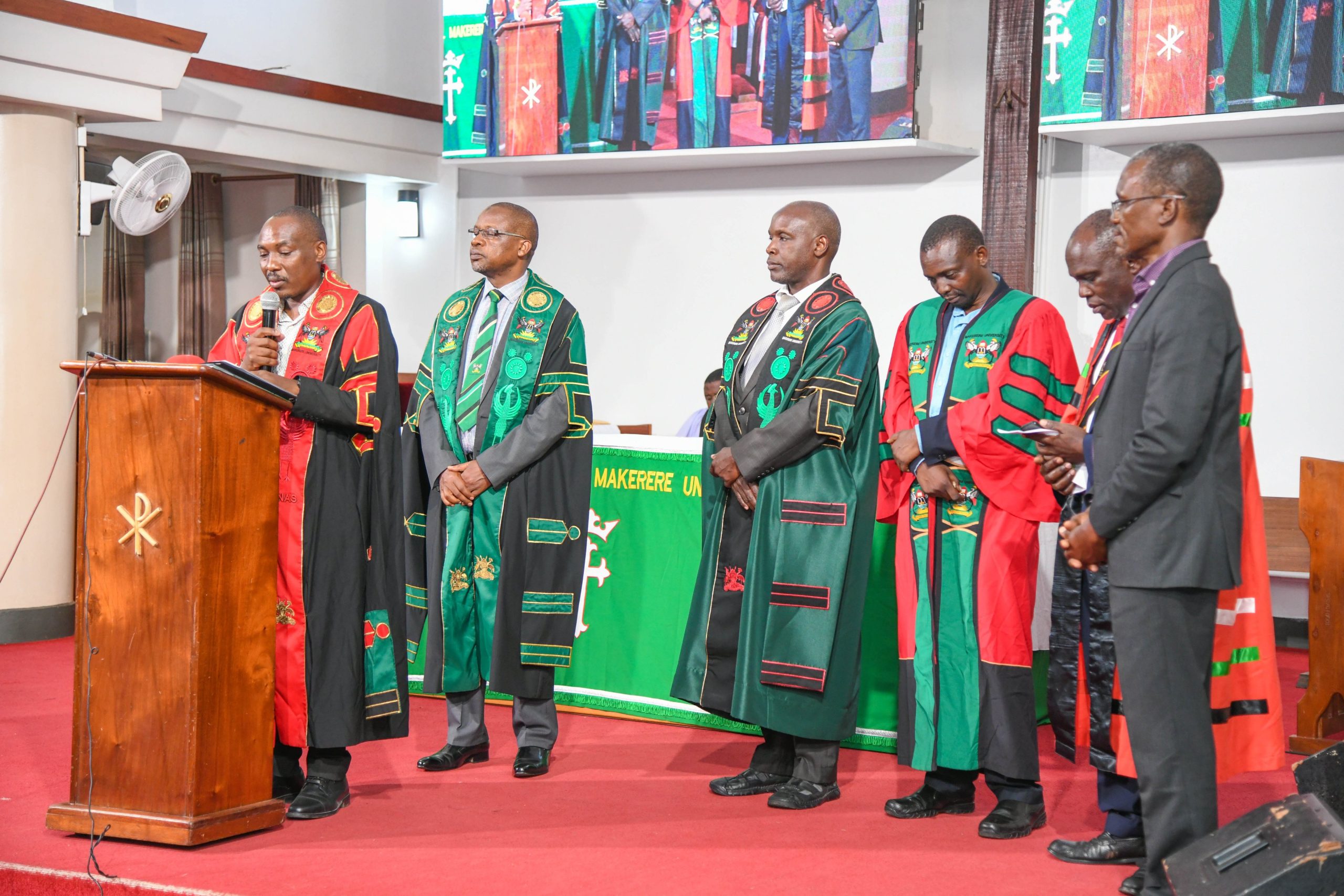
He recalled instances where Professor Luboobi made firm decisions, including terminating contracts when integrity was compromised, setting a tone that shaped the department’s reputation for honesty and excellence. Even as Vice Chancellor, he remained deeply involved in the department’s affairs, teaching, supervising students, all the while handling top administrative duties punctually. Prof. Mango spoke with great admiration of a man who led by example, mentored many, and whose contributions to mathematics education, research, and policy-making continue to shape the future of the discipline in Uganda and beyond.
According to an article from 1990 written by Dr. Vincent Ssembatya and Andrew Vince at the University of Florida, the Uganda Mathematical Society (UMS), which was formally established on 25th November, 1972 has since inception enjoyed major support from Makerere University and Kyambogo University in terms of infrastructure and leadership. Professor Paul Mugambi, who was also present at Professor Luboobi’s funeral service was elected first president of the UMS. Dr. Saul Nsubuga from the Department of Mathematics represented UMS at the service, honouring Professor Luboobi’s pioneering role in the discipline.
The service also featured tributes from close friends and family. Loved ones shared stories of a man who remained grounded no matter how high he rose, a man who valued relationships and walked closely with his faith. His children and grandchildren remembered him as a father who was ever-present, a listener, and a source of steady guidance.
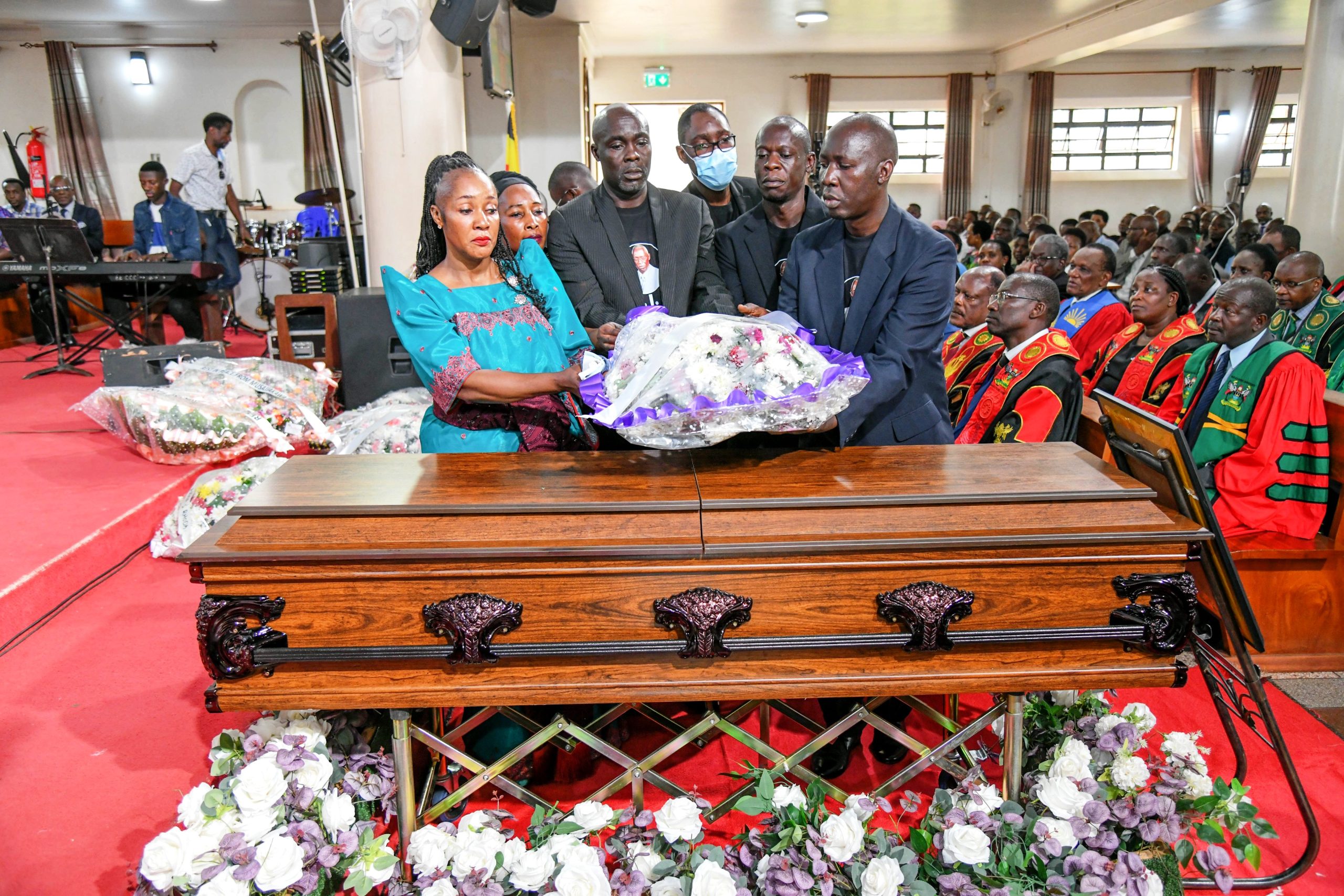
Professor Daniel Kibuule, son of the late Professor Luboobi and Dean, Faculty of Health Sciences at Busitema University, delivered a deeply personal tribute that painted a full portrait of his father’s life, values, and final days. He expressed gratitude to the University leadership, family, friends, and medical professionals who stood with them during a challenging period. He particularly thanked his siblings, Dr. David Kimera and Dr. Irene Nakiyimba for their unwavering role in caring for Professor Luboobi through illness.
He spoke of a man who, despite great academic accolades, remained deeply humble and committed to discipline, simplicity, and faith. From instilling punctuality and responsibility to ensuring his children charted their own paths, none bearing his surname “Luboobi”, Prof. Luboobi was intentional in every lesson he passed on. Kibuule recalled his father’s insistence on being at home even in his final moments, his strong connection to Christ, and his quiet strength despite his failing health.
Former students and mentees echoed the same sentiments, of a teacher who was generous with his time and invested deeply in others’ growth. The community that gathered was not only there to grieve but to celebrate the quiet legacy of a man whose example continues to live on.
Among the mourners were public figures and leaders, including Hon. Abed Bwanika, Member of Parliament for Kimanya-Kabonera, Hon. Nyombi Thembo, the Executive Director Uganda Communications Commission, and Hon. Dr. Ham-Mukasa Mulira, former Minister of ICT, among others.
In his passing, Makerere University has lost a pillar, but his life reminds us that greatness lies in consistency, in humility, and in service to others. Professor Luboobi’s memory will continue to live on in the minds he shaped, the systems he built, and the values he embodied. He ran his race with grace.
The Writer is a Volunteer in the Public Relations Office, Makerere University
Please click the embedded video below to view the service livestream
General
Public University Legal and Accounting Officers Trained on Governance and Compliance
Published
2 days agoon
July 17, 2025By
Eve Nakyanzi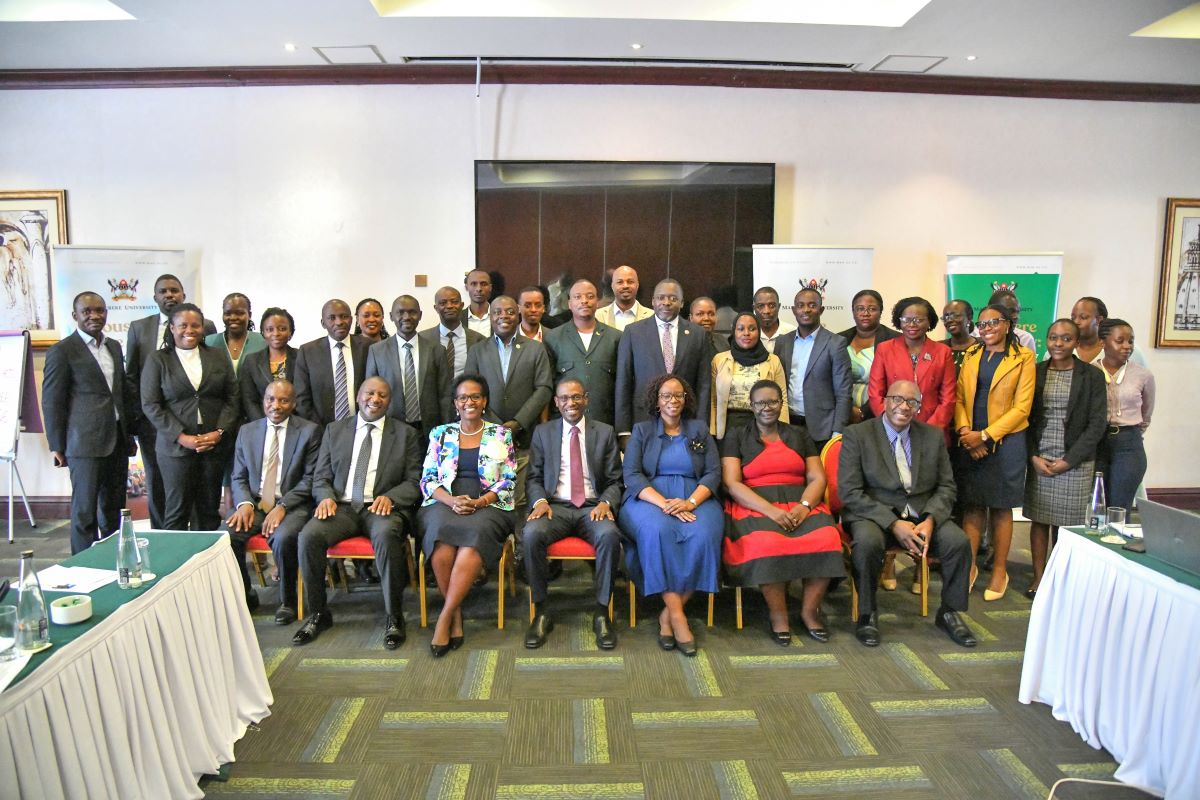
Legal and accounting officers from public universities across Uganda have convened, for a high-level training workshop organized by Makerere University. The three-day training, taking place from July 16th to 18th, 2025, is aimed at strengthening legal frameworks, improving institutional governance, and ensuring compliance with public finance and procurement laws within higher education institutions.
Ms. Lorna Magara, Chairperson of the Makerere University Council and Guest of Honour at the opening session, commended the initiative as timely and necessary. She addressed the growing backlog of court cases affecting Makerere and other public universities and outlined measures already taken to mitigate legal risks. These include the establishment of a Legal Rules and Privileges Committee and the Directorate of Legal Affairs, part of a broader strategy to improve legal compliance and foster good governance.
Representing the Vice Chancellor, Prof. Winston Tumps – Ag. Deputy Vice Chancellor (Finance and Administration), described the training as both strategic and practical. “It is imperative that we learn from each other, especially in how we handle employee litigation and institutional legal risks,” he remarked. He added that the program is designed to promote experience-sharing across universities and enhance collective institutional growth.
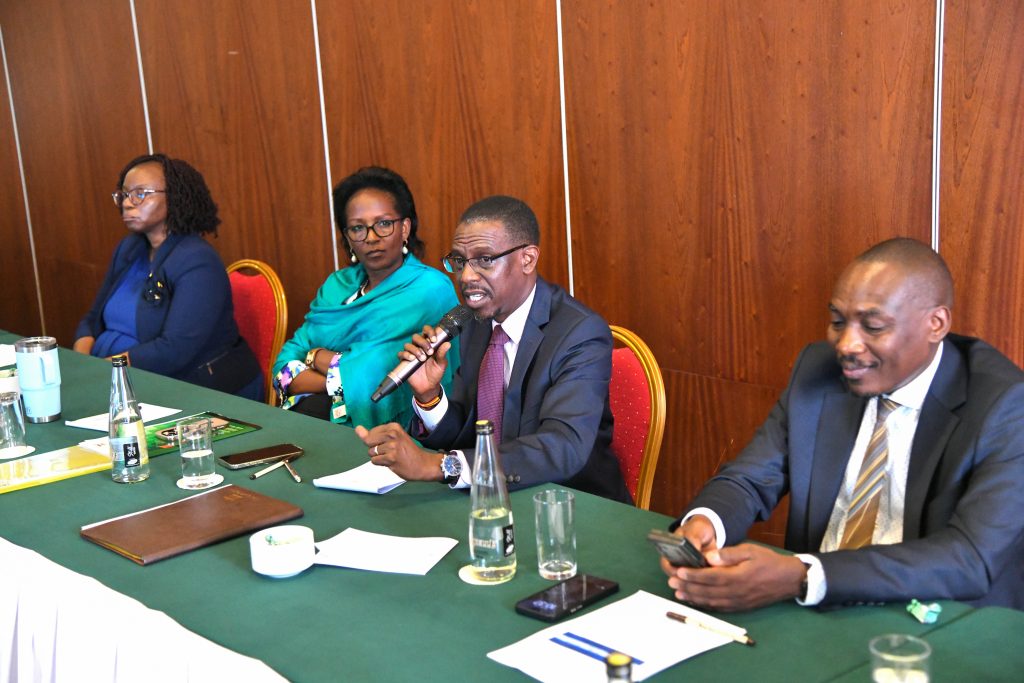
In his address, Mr. Yusuf Kiranda, University Secretary at Makerere University, emphasized the urgent need for robust legal oversight and more effective case management mechanisms within public universities.
The training featured a keynote address by the Attorney General of Uganda, Hon. Kiryowa Kiwanuka, who provided critical insights into legal expectations for public institutions. He warned that failure to heed legal advice could result in personal liability for accounting officers, citing a precedent involving the Uganda Cancer Institute. “Universities must consult the Attorney General’s chambers before entering into major contractual obligations,” he advised, urging legal officers to document decisions meticulously as proper record-keeping forms the first line of defense in legal disputes.
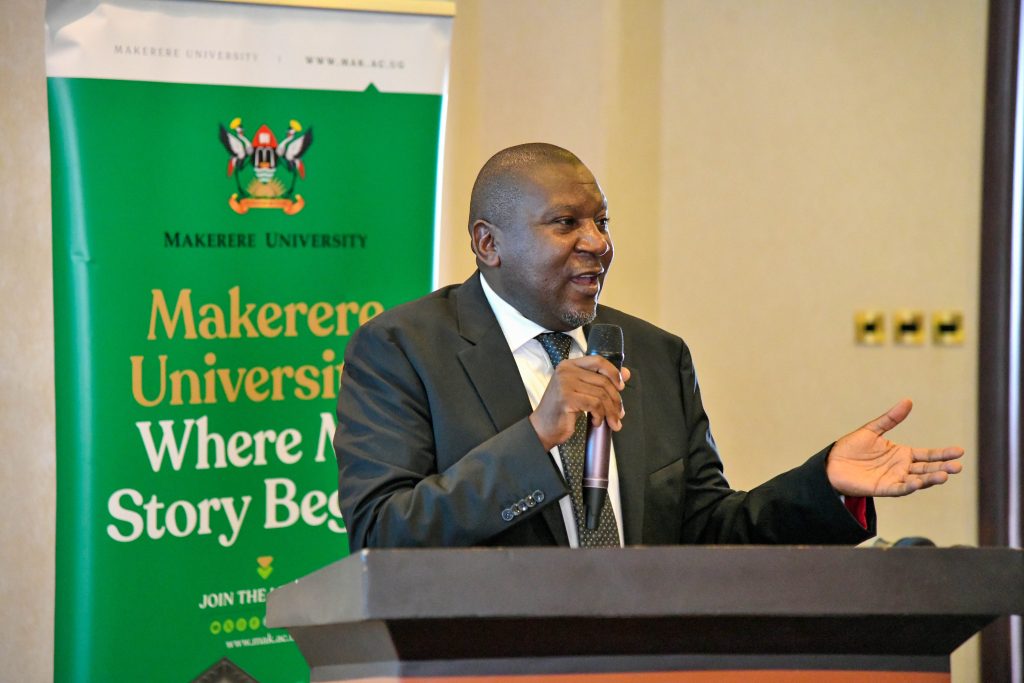
Hon. Kiwanuka further discussed the government’s ongoing efforts to recentralize legal services to ensure alignment with the Attorney General’s office. He cautioned in-house counsel against becoming overly entangled in decision-making processes, stressing the need for objectivity. Other key issues he addressed included contract approvals, misuse of Memoranda of Understanding (MoUs), and lapses in procurement processes, particularly at the close of financial years.
Participants also benefited from insights by Hon. Justice Musa Ssekaana of the Court of Appeal, who offered an in-depth analysis of judicial review and its significance in promoting lawful, transparent university governance. He called on university legal officers to act with clarity, timeliness, and accountability.
Lady Justice Joyce Kavuma, Judge of the High Court, delivered a comprehensive presentation on dispute and claim management involving public universities. She addressed emerging trends in civil litigation, emphasizing the importance of due process, transparency, and clear communication in resolving employment, student, and contractual disputes. Drawing on real case examples, she urged institutions to strengthen internal systems, embrace participatory governance, and adopt regional best practices to minimize litigation and protect institutional reputation.
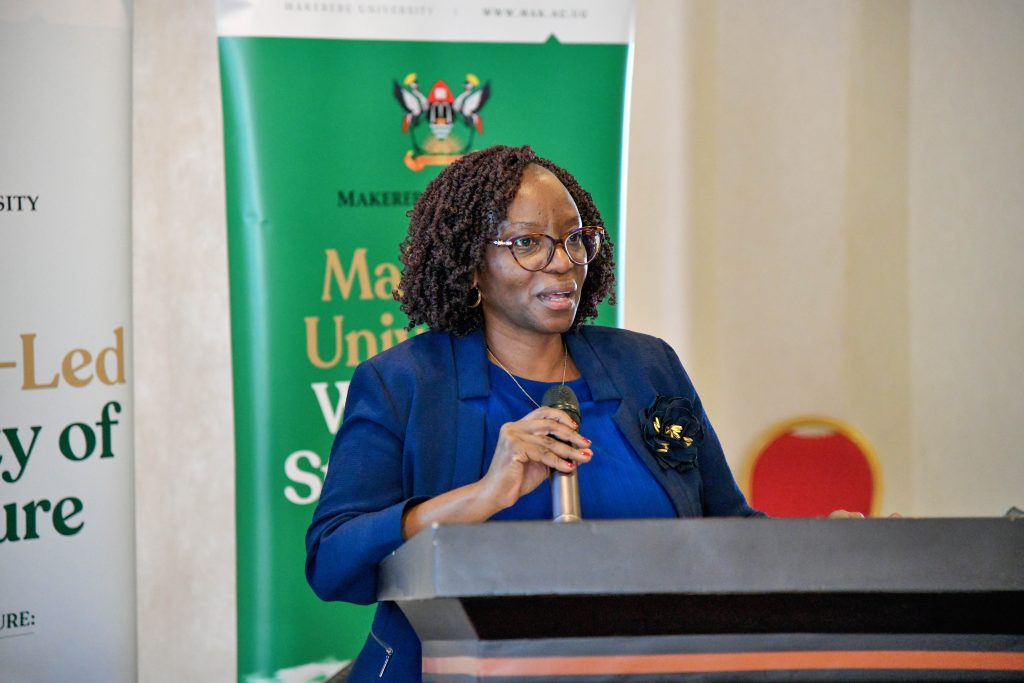
The training reflects a shared commitment among public universities to build a more accountable, legally sound, and strategically aligned higher education system in Uganda. Through peer learning and collaboration, participating institutions aim to reduce litigation, enhance institutional autonomy, and uphold the rule of law.
Participating universities include Makerere University, Kyambogo University, Mbarara University of Science and Technology, Busitema University, Mountains of the Moon University, and Lira University.
The training concludes on July 18th 2025, with sessions focusing on employment dispute management in public universities and the implications of recent PPDA Appeals Tribunal decisions on procurement and disposal practices within public entities.
General
Celebrating the Life of Prof. Livingstone Sserwadda Luboobi
Published
2 days agoon
July 17, 2025By
Mak Editor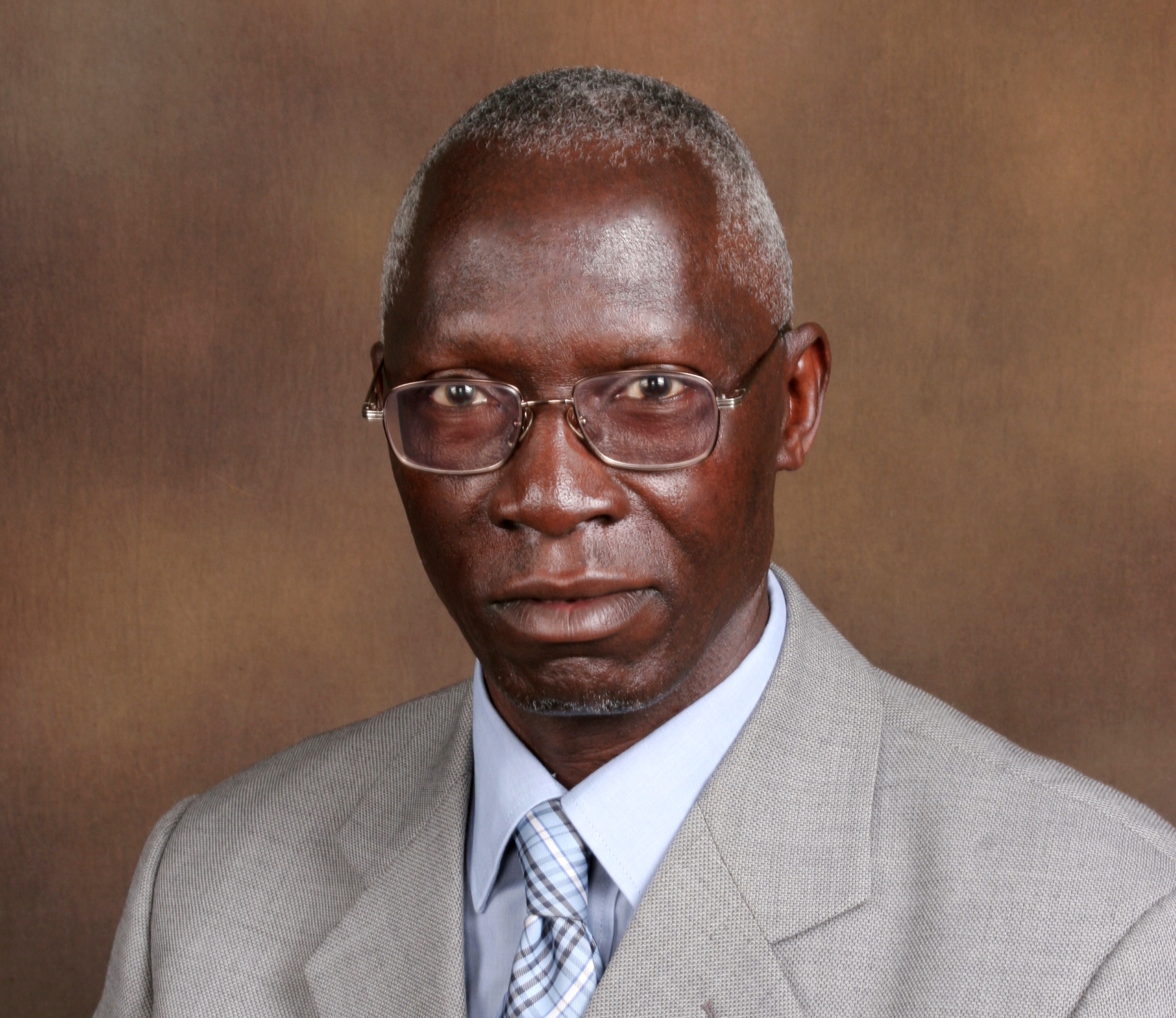
A Visionary Leader, Seasoned Mathematician, & Humble Academician
It is with profound love and respect that we celebrate the life of Prof. Livingstone Sserwadda Luboobi, a distinguished scholar, transformative leader, and beloved Vice Chancellor Emeritus of Makerere University. His legacy is woven in the fabric of African higher education, marked by intellectual brilliance, unwavering commitment to academic excellence, and a life of selfless service.
A Life of Purpose and Vision
Prof. Luboobi was more than a mathematician. He was a visionary, whose work transcended equations and research papers. Serving as Vice Chancellor from 2004 to 2009, he led Makerere University through a critical period of growth and transformation. Under his guidance, the university expanded its reach, strengthened its academic rigor, and embraced innovation and reform. His calm demeanour and principled decision-making earned the admiration of students, faculty, and peers alike.
Prof. Luboobi was deeply committed to nurturing talent and fostering intellectual curiosity, leaving an indelible mark on the institution’s culture and future direction.
Beyond Uganda, Prof. Luboobi’s influence resonated across the global academic community. He was a passionate advocate for the transformative power of science and education, often speaking at international forums and collaborating on research that bridged continents and disciplines. His work helped elevate the profile of African scholarship on the world stage.
His legacy endures not only in the impressive body of work he left behind but also in the countless lives he touched – students, educators, and leaders who continue to draw inspiration from him.
Academic and Leadership Journey at Makerere University
An illustrious alumnus of Makerere University, Prof. Luboobi graduated with First Class Honours in Mathematics, laying the foundation for an extraordinary academic journey. He pursued further studies at the University of Toronto (MSc in Operations Research, 1971-72) and the University of Adelaide (PhD in Biomathematics, 1978–80). His scholarly journey spanned prestigious institutions worldwide, including UCLA, the University of Bergen, and the University of Dar es Salaam, establishing him as a scholar of global repute and a proud ambassador of African intellectualism.
Prof. Luboobi’s service to Makerere begun in 1970 as a Special Assistant-remarkably, while still an undergraduate, rising through the ranks to full Professor in 1997. He served as Head of Department, Dean of the Faculty of Science (1994–2001), and later became the university’s first elected Vice Chancellor. His tenure brought new energy to institutional leadership, characterized by transparency, inclusivity, strategic direction and accountability.
Strategic Reforms and Institutional Impact
A true architect of transformation, Prof. Luboobi chaired the development of Makerere’s first locally-conceived Strategic Plan (1990–91). He was instrumental in securing a UGX30 billion grant from NORAD in 1999, which revitalized key academic areas such as computing, gender studies, and food science. He co-founded the Makerere University Private Sector Forum, bridging the gap between academia and industry, and strengthening alumni engagement and resource mobilization.
Pioneering Biomathematics and Mentorship
As one of Africa’s pioneering biomathematicians, Prof. Luboobi introduced mathematical modeling to tackle real-world problems in epidemiology, ecology, and operations research. His scholarly contributions – over 150 publications – reflect the depth and breadth of his research. Yet, perhaps his most lasting impact lies in mentorship: he supervised more than 35 PhD and over 50 MSc students, including Makerere’s first female PhD graduate in Mathematics, nurturing a generation of scholars and leaders.
Prof. Luboobi’s Contribution to the Internationalization of Makerere University
Prof. Luboobi played a pivotal role in advancing the international profile of Makerere University. Demonstrating remarkable personal commitment, he utilized his own resources to support the establishment of the University’s International Office. This strategic initiative laid the foundation for a more structured and effective engagement with global academic institutions, development partners, and international students. As a result, Makerere University significantly enhanced its global footprint, forming numerous international collaborations and attracting increased academic and research opportunities from abroad.
In addition to his contributions to internationalization, Prof. Luboobi was also instrumental in revitalizing the University’s Public Relations Unit. Under his guidance, the unit adopted more proactive and professional communication strategies, which greatly improved the institution’s public image. This, in turn, fostered greater public trust and strengthened the university’s reputation both locally and internationally. His visionary leadership in these areas has had a lasting impact, positioning Makerere University as a leading institution in East Africa and beyond.
Global Recognition and Enduring Legacy
Prof. Luboobi’s contributions earned him widespread recognition. In 2008, the University of Bergen awarded him an Honorary Doctorate for his role in internationalizing academia. Makerere University honoured him with a Lifetime Achievement Award in 2013, and the Government of Uganda conferred upon him a National Gold Medal for his unwavering service to education and national development.
Even after retirement, Prof. Luboobi remained an active contributor to academic life-lecturing, supervising, and advising the university.
A Lasting Light in African Academia
Prof. Livingstone Sserwadda Luboobi’s life was a model of scholarship anchored in service, leadership tempered with humility, and an unshakable belief in the power of education. He leaves behind a vibrant academic legacy and a trail of inspired minds. His contributions will continue to shape Makerere University, Uganda, and the global academic community for generations to come.
We extend our heartfelt condolences to his family, colleagues, and the entire Makerere University community during this difficult time.
May his soul rest in eternal peace.
Trending
-
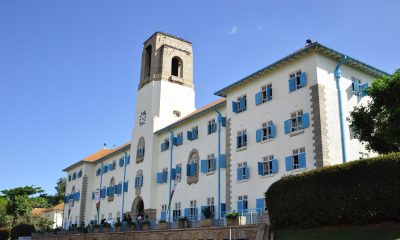
 General2 weeks ago
General2 weeks agoRe-advert: Admission to Undergraduate Programmes 2025/2026
-
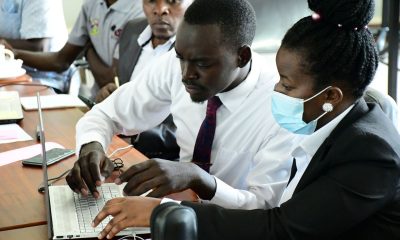
 General1 week ago
General1 week agoRe-Advert for Applications for Diploma and Certificate Training
-
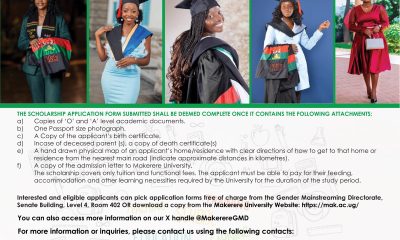
 General5 days ago
General5 days agoMakerere University Fees Waiver for 40 First Year Female Students 2025/2026
-
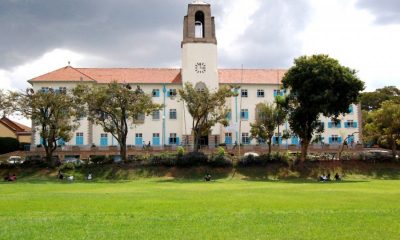
 General2 weeks ago
General2 weeks agoPress Statement on Ranking
-
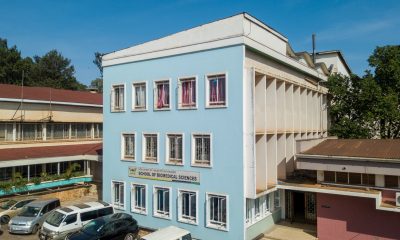
 Health1 week ago
Health1 week agoCall for Applications: Responsible Conduct of Research (RCR) Training Course
